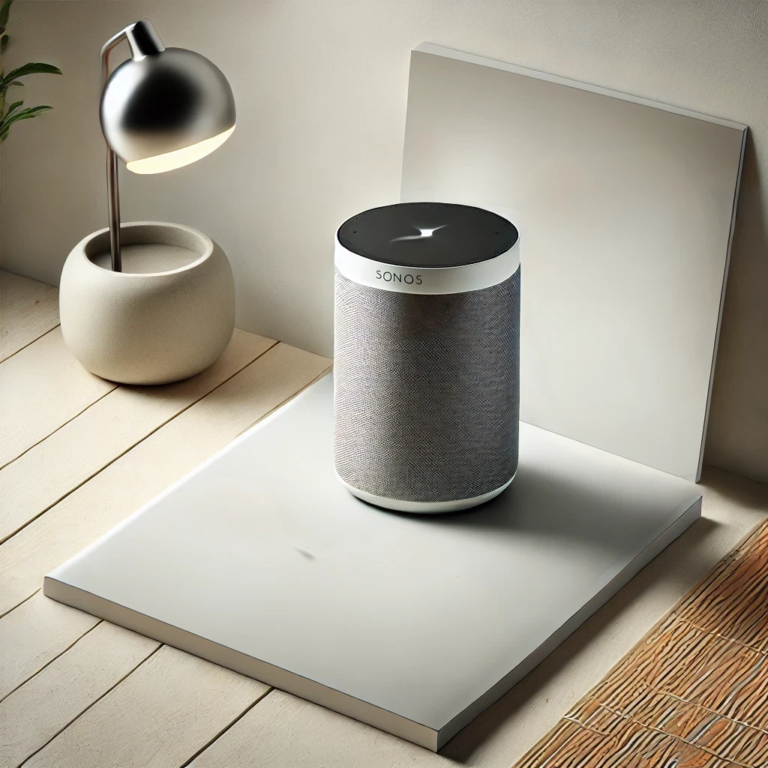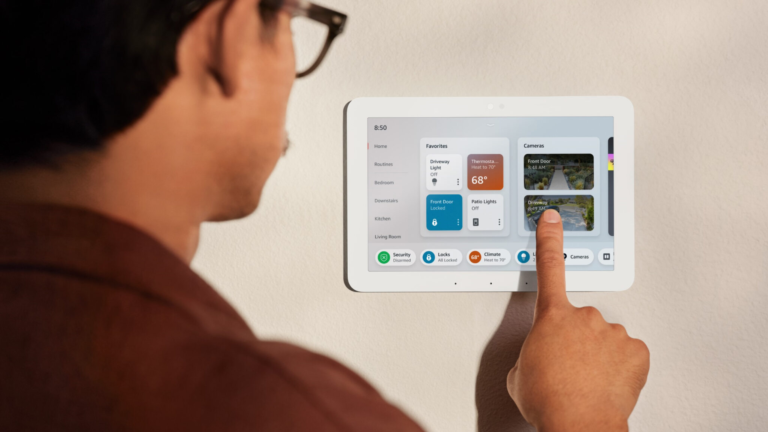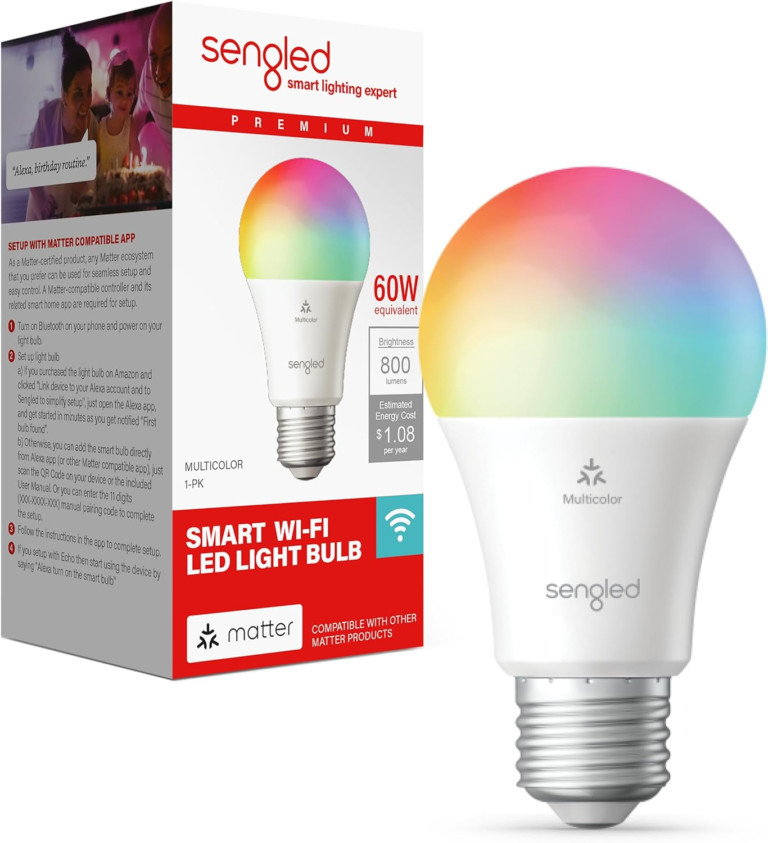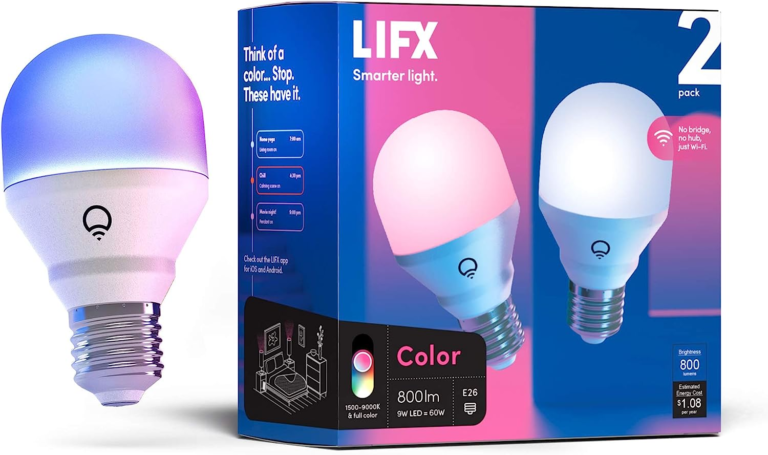Energy Efficiency at Home: How Smart Tech Can Save You Money
With rising energy costs and growing environmental concerns, making your home more energy-efficient is crucial. Smart technology offers simple and effective ways to reduce energy use and save money. These tools, from smart thermostats to energy monitors, can help you create a more efficient and comfortable home.
6 Ways Smart Technology can help you save some money $$$
1. Smart Thermostats: The Heart of Energy Efficiency

Smart thermostats like the Nest Learning Thermostat and Ecobee SmartThermostat are game-changers in energy management. These devices learn your schedule and adjust the temperature automatically, ensuring you’re not wasting energy when you’re not home. Maintaining optimal temperatures efficiently can reduce your heating and cooling costs by up to 10-12% annually. Additionally, many smart thermostats come with features like remote control via smartphone apps, allowing you to adjust settings on the go, making your life more convenient and comfortable.
When I installed a Nest thermostat last year, I noticed a significant drop in my energy bills within months. The best part was that it seamlessly adapted to my family’s routine without manual input. Whether at home or away, the thermostat ensured our house was at the perfect temperature, providing comfort while saving energy. The ability to control the thermostat from my phone meant I could make adjustments even when I was out, adding an extra layer of convenience to our daily lives.
2. Smart Lighting: Bright Ideas for Saving Energy

Smart lighting systems, such as Philips Hue or LIFX bulbs, are a brilliant way to enhance energy efficiency at home. These bulbs are designed to consume less energy than traditional incandescent bulbs, and their longevity means fewer replacements and reduced waste. By allowing you to control your lights remotely via an app or voice commands, smart lighting helps you avoid unnecessary energy usage.
With smart lighting, you can set schedules to ensure lights are only on when needed. For instance, you can program your lights to turn on just before you wake up and turn off when you leave for work. This cuts down on energy costs and fits seamlessly into your daily routine, enhancing your home’s convenience and security.
Since installing Philips Hue bulbs in my home, I’ve set them to gradually brighten in the morning, helping me wake up naturally. In the evenings, they dim automatically, creating a relaxing atmosphere while saving energy. The ability to control all the lights from my phone means I never worry about accidentally leaving them on when I’m away, which has reduced my electricity bills.
Best Tip: Install motion sensors in strategic locations like hallways, bathrooms, and closets. This ensures lights are only on when needed and significantly reduces energy waste by automatically turning off when no motion is detected.
3. Smart Plugs and Power Strips: Cutting Standby Power

Smart plugs and power strips, such as the Wemo Mini Smart Plug or Kasa Smart Wi-Fi Power Strip, are essential for managing and reducing energy consumption. Many devices continue to draw power even when turned off, a phenomenon known as standby power or “phantom load.” Smart plugs and power strips help you eliminate this wasted energy by allowing you to control the power supply to these devices remotely.
By integrating smart plugs into your home, you can schedule devices to turn off automatically when not in use, ensuring no energy is wasted. For example, you can set your smart plug to turn off your coffee maker or television when you’re not at home or during nighttime hours. This reduces energy consumption and adds an extra layer of safety by preventing potential electrical hazards.
I’ve connected my entertainment system to a Kasa smart power strip in my home. Now, it automatically turns off all connected devices when I go to bed, significantly lowering my electricity bills. The convenience of controlling everything from my phone means I can easily switch off devices that I might otherwise forget about.
Best Tip: Use smart plugs for high-energy devices like space heaters, dehumidifiers, and kitchen appliances. Schedule them to turn off when not in use, ensuring you never waste energy on devices left on standby.
4. Smart Appliances: Efficient and Convenient
Modern smart appliances, from refrigerators to washing machines, are designed with energy efficiency in mind. Brands like Samsung and LG offer models that can be controlled remotely, allowing you to run them during off-peak hours when energy costs are lower. These appliances often come with advanced features such as energy usage tracking, eco-modes, and optimized performance settings that help reduce overall consumption.
For instance, smart refrigerators can monitor and adjust their internal temperature based on the contents and usage patterns, ensuring they operate at peak efficiency. Smart washing machines can automatically adjust water usage and cycle duration based on the load size, reducing water and energy consumption.
I replaced my old washing machine with an LG smart washer in my home. I can start a wash cycle remotely via my phone and choose energy-saving modes, significantly reducing electricity and water use. Running it during off-peak hours has also helped lower my utility bills.
Best Tip: Use your smart appliances’ remote control features to run them during off-peak hours. This will save on energy costs and reduce the strain on the power grid during peak times.
5. Energy Monitoring Systems: Insight into Your Consumption

Devices like the Sense Home Energy Monitor or Neurio Home Energy Monitor provide real-time data on your energy usage, clearly showing how and where you’re consuming power. These monitors can identify high-consumption devices and areas in your home, allowing you to make informed decisions about where to cut back. By pinpointing energy hogs, you can take specific actions to reduce usage and lower your utility bills.
An energy monitoring system can track everything from your HVAC system to individual appliances, providing detailed insights and recommendations for improving efficiency. For example, if your monitor shows that your old refrigerator consumes more power than expected, you might replace it with a more energy-efficient model.
Installing a Sense Home Energy Monitor revealed that my HVAC system was consuming a lot more power than it should. Armed with this information, I scheduled maintenance and made adjustments that resulted in immediate cost savings and a more comfortable living environment.
Best Tip: Use the data from your energy monitor to set specific energy-saving goals and track your progress over time. This proactive approach allows you to identify trends and adjust before high energy usage becomes a costly problem.
6. Smart Window Treatments: Harnessing Natural Light

Automated blinds and shades, such as those from Somfy or Lutron, help regulate indoor temperatures by controlling the amount of sunlight that enters your home. By adjusting based on the time of day and weather conditions, smart window treatments can significantly reduce the need for artificial heating and cooling, leading to lower energy bills.
Smart window treatments can be programmed to open during cooler parts of the day to let in natural light and warmth and close during the hottest parts to keep your home cool. This helps maintain a comfortable indoor temperature and reduces the load on your HVAC system.
I installed Lutron motorized shades in my home and connected them to my smart home system. They automatically close during peak sunlight hours in the summer to keep my home cooler and open during winter mornings to let in natural warmth. This automation has made a noticeable difference in maintaining a consistent indoor temperature and reducing energy costs.
Best Tip: Integrate your smart window treatments with a smart thermostat for a seamless energy-saving experience. This coordination ensures optimal temperature regulation by maximizing natural light and heat.
These technologies offer significant savings by optimizing energy usage, providing real-time insights, and automating routine tasks. Start with one smart device and see the difference it makes. You’ll be surprised at how quickly these small changes can add up to significant savings. Plus, you’ll do your part to help the environment, one smart gadget at a time.
FAQs
1. How do smart thermostats save energy?
Smart thermostats save energy by learning your schedule and adjusting the temperature automatically. They reduce heating and cooling when you’re not home and can be controlled remotely via an app.
2. Are smart bulbs really more efficient than regular bulbs?
Yes, smart bulbs are more energy-efficient than traditional incandescent bulbs. They use LED technology, which consumes less power and can be scheduled or dimmed to save even more energy.
3. How can smart plugs reduce my electricity bill?
Smart plugs help reduce your electricity bill by cutting off power to devices in standby mode. You can schedule them to turn off devices when not in use, preventing unnecessary energy consumption.
4. What are the benefits of using an energy monitoring system?
Energy monitoring systems provide real-time data on your energy use, helping you identify high-consumption devices. This information lets you make informed decisions to reduce energy waste and save money.
5. Can smart window treatments really make a difference?
Yes, smart window treatments can significantly impact your energy efficiency. They can be programmed to open and close based on the time of day and weather, helping to regulate indoor temperature and reduce the need for heating and cooling.

Dyson Pure Cool Review: The Smart Air Purifier You Need
It’s really important to keep the air we breathe at home clean and healthy, don’t you think? The Dyson Pure Cool smart air purifier is designed to ensure that the air in your home is of the highest quality. It uses advanced technology to remove impurities and keep the air fresh and clean. So, you…

Sonos One Review: The Ultimate Smart Speaker for Music Lovers
Sonos One is this amazing smart speaker that totally rocks! It’s designed to give you top-notch sound and play really nicely with all your smart home gadgets. Whether you’re a music buff or need a solid speaker, Sonos One is there to take your listening game to the next level. In my review, we’ll dig…

Google Nest Hub Review: Your Ultimate Smart Home Assistant
The Google Nest Hub is an advanced smart display incorporating Google Assistant and a user-friendly touchscreen interface. This innovative device seamlessly integrates with various smart home devices, allowing for comprehensive control and monitoring. In addition, it provides detailed and real-time weather updates and offers a wide array of entertainment options, making it an essential addition…

Review of the Amazon Echo Show 8: An Ideal Smart Display Solution for Your Home
The Amazon Echo Show 8 is a versatile smart display that combines the power of Alexa with a vibrant HD screen, making it an ideal addition to any modern home. Whether you want to control your smart home devices, make video calls, or enjoy multimedia content, the Echo Show 8 promises to deliver a seamless…

Sengled Smart Bulb Review: A Smart Choice for Your Home Lighting Needs
Smart lighting is essential to modern homes, providing convenience, energy savings, and enhanced ambiance. Sengled, a renowned name in the smart lighting industry, offers an impressive range of smart bulbs. The Sengled Smart Bulb promises to deliver quality, functionality, and affordability. But is it the right choice for your home? Why Choose Sengled Smart Bulb?…

LIFX A19 Smart LED Light Bulb Review: Is It the Right Choice for Your Home?
Introduction Smart lighting is really changing the way we think about home automation. LIFX, a company known for its innovative and high-quality products, is leading the charge in this space. Their flagship offering, the LIFX A19 Smart LED Light Bulb, promises to bring vibrant color, exceptional brightness, and smart functionality to your home. But is…




One Comment
Comments are closed.